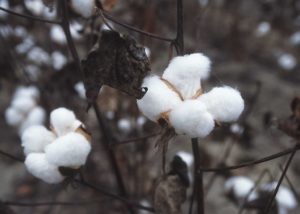Staple Yarn Spinning
Yarn formation techniques for staple yarn
The larger part of staple fibre, approx. 33 mio tons are processed in short staple spinning. This part of the spinning industry therefore is of great significance in the world of textile production.
Staple Yarn
 Cut staple manmade fibers arrive in boxes at the mill and are ready for carding and processing into yarn. When two or more different staple fibers are mixed, it is critical to provide extensive blending before carding and repeated doubling of the sliver to assure intimate blending prior to roving and spinning.
Cut staple manmade fibers arrive in boxes at the mill and are ready for carding and processing into yarn. When two or more different staple fibers are mixed, it is critical to provide extensive blending before carding and repeated doubling of the sliver to assure intimate blending prior to roving and spinning.
Staple yarn formation involves multiple steps and can include :
- Fiber cleaning and opening (as needed for natural fibers);
- Fiber blending (to assure uniform mixing in natural fibers or in fiber blends);
- Carding (to align fibers and to remove short fibers);
- Combing (if highly aligned fibers are desired);
- Drawing and spinning (to reduce the denier of the yarn, to provide a twist and to give cohesion to the yarn); and
- Doubling or plying and twisting of the yarns (as needed to provide greater uniformity).
Filament spinning systems are much less complex because the fibers are continuous and do not need to be highly twisted to give a cohesive strong yarn.
Yarns can be made of staple fibers by any one of several techniques.
The method used is depended upon factors such as:
- Manufacturers preference of equipment
- Economic implications
- Fibers to be used
- Desired properties of the yarn
The value and character of yarn are determined by
- Kind and quality of fiber
- Amount of processing necessary to produce fineness
- Amount of twist which increases strength in the final yarn
Staple spinning Processes:
- Conventional ring spinning
- Open end spinning or rotor spinning
- Friction spinning
- Self-twist spinning
- Electrostatic spinning
- Vortex spinning
- Air-jet spinning
- Twistless spinning (Twilo)
Short Staple Spinning
The larger part of staple fiber, approx. 33 min tons are processed in short staple spinning. This part of the spinning industry, therefore, is of great significance in the world of textile production. In this context, the word “spinning” refers to the conversion of a large quantity of individual unordered fibers of relatively short length into a linear, ordered product of very great length by using suitable machines and devices. In processing natural fibers, the same basic operations are always involved.
Machines used in short-staple spinning
| Operation | Machines |
|---|---|
| Opening |
|
| Cleaning |
|
| Blending |
|
| Aligning |
|
| Uniting |
|
| Equalizing |
|
| Attenuating |
|
| Imparting Strength |
|
| Winding |
|


